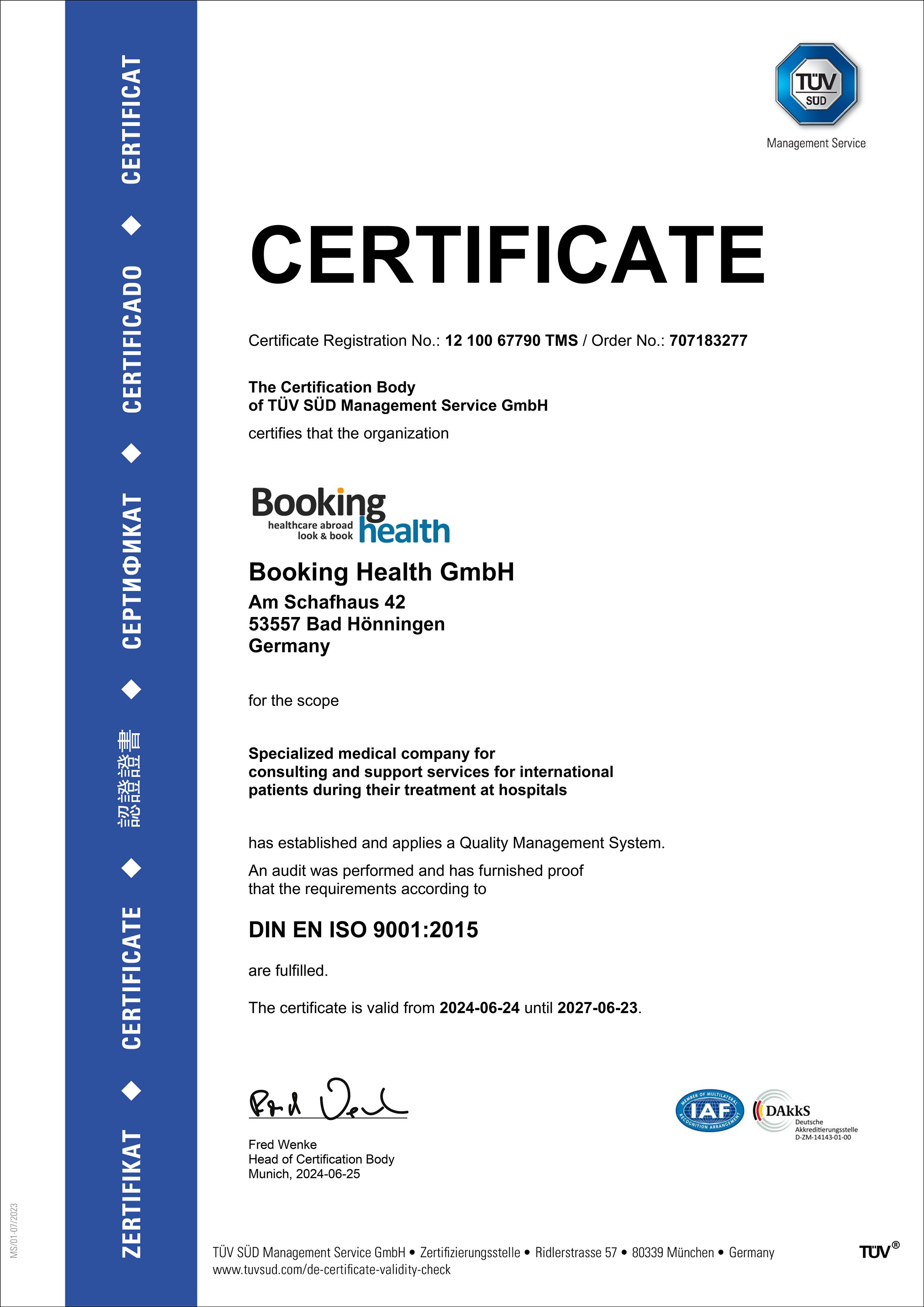Stenosis is a narrowing of a blood vessel. Carotid artery stenosis is considered one of the main causes of strokes and therefore requires treatment. You can get medical care for this disease abroad. Doctors in developed countries use not only surgical but also minimally invasive treatment procedures, which are performed from inside the blood vessels. Doctors restore patency of the carotid arteries to relieve symptoms and prevent a stroke. You can travel abroad to receive high-quality medical services. On the Booking Health website, you can find prices and choose a hospital.
Content
- Diagnostics
- Carotid endarterectomy
- Angioplasty and stenting
- Where to undergo treatment of carotid artery stenosis?
Diagnostics
Even hemodynamically significant vascular stenosis usually does not cause any symptoms. Patients undergo diagnostics after visiting a doctor for a recent stroke or a transient ischemic attack. It is manifested by slurred speech, weakness in the limbs, poor sight, or other neurological symptoms that usually disappear within a day.
The very first method for assessing the state of the carotid artery is duplex scanning of the carotid arteries. This is an ultrasound diagnostic method. The examination visualizes the vessels and measures blood flow velocity.
All patients who seek medical attention with neurologic symptoms have a brain CT scan to detect a possible stroke, if any.
When planning the treatment of carotid artery stenosis, more accurate diagnostics than ultrasound may be required. Doctors do contrast-enhanced X-ray scans (angiography), MRI, or CT scans. Whenever possible, CT and MRI scans are preferred, as these methods are safer. The imaging of the blood vessels does not require intra-arterial administration of a contrast agent as it can be administered intravenously.
During the diagnostics, doctors assess the severity of the stenosis. Depending on how passable the carotid artery is, stenosis can be:
- mild, with artery constriction not exceeding 30%;
- moderate, with artery constriction of up to 70%;
- severe, with artery constriction by 70% or more.
Based on the severity of vascular stenosis, doctors plan treatment tactics. Surgery may be required for stenosis causing a narrowing of more than 70%. For the rest of the patients, conservative therapy and medical supervision are sufficient.
Carotid endarterectomy
An endarterectomy is one of the most common operations in vascular surgery. It has been performed since the middle of the 20th century. The main goal of the surgical procedure is stroke prevention.
The brain is supplied with blood from the carotid artery by 85%. Approximately one third of all strokes are associated with stenosis of this blood vessel.
The essence of an endarterectomy is that doctors remove the inner layer of the carotid artery along with atherosclerotic plaques and blood clots. This results in the increase of the lumen of the blood vessel and the restoration of blood flow to the brain.
Carotid endarterectomy can be:
The classical operation involves dissecting the carotid artery along. A doctor will then remove blood clots and plaques and suture the blood vessel using a patch.
Eversion carotid endarterectomy involves dissecting the carotid artery across. Doctors turn the blood vessel inside out, remove blood clots and plaques, then turn the artery inside out again and suture the ends together. This technique is technically more difficult, but it reduces the risk of complications.
Angioplasty and stenting
If you receive medical care in one of the developed countries, there will be an option for minimally invasive treatment in addition to surgery. Balloon angioplasty with carotid stenting is performed through a small incision in the leg. The procedure is carried out from the inside of the blood vessels. As a result, the operation becomes less traumatic, does not require any long-term rehabilitation, and does not leave any noticeable scars. The integrity of the carotid artery is not violated since it does not have to be dissected and sutured.
Angioplasty involves the dilation of blood vessels with a balloon that inflates from the inside. It is injected into the stenosis site, after which a saline solution with a contrast agent is injected inside. As a result, the lumen of the carotid artery increases.
Stenting is done to prevent repeated narrowing. A stent, a frame that holds the lumen of the artery open, is placed in the stenosis area.
In the past, endovascular treatment was rarely performed because it increased the risk of a stroke compared to an open endarterectomy. But today, minimally invasive interventions are becoming a real alternative to classical surgery. New methods for the prevention of cerebral embolism have appeared. Doctors are now using new types of stents and protective devices, such as Emboshield filters, to prevent blood clots from appearing in the blood vessels and entering the cerebral arteries. Complications can be prevented with the help of medications.
Where to undergo treatment of carotid artery stenosis?
It is better to undergo your surgery or an endovascular procedure on time to get rid of the symptoms of the disease and reduce the risk of a stroke. You can undergo your treatment in one of the developed countries to expect the best results with a minimal risk of complications. With the help of the Booking Health service, you can find the cost of treatment and choose a clinic for your treatment abroad.
There are a few reasons for you to undergo your treatment abroad:
- high-precision diagnostics using modern equipment, which helps to optimally plan the surgical procedure;
- doctors perform new modifications of an endarterectomy, which are less traumatic and safer;
- leading foreign hospitals have state-of-the-art equipment;
- Vascular Surgery Centers in developed countries employ specialists who enjoy a high reputation all over the world;
- surgeons perform not only surgery but also minimally invasive endovascular procedures, after which it is not necessary to recover for a long time;
- special stents and embolism protection devices are used, which make endovascular treatment as safe as possible (now the risk of complications is not higher than with an open endarterectomy).
You are welcome to visit the Booking Health website to compare the cost of treatment in different hospitals and choose the most suitable option. Please leave your request on the website and our specialists will help you to make the right choice. When making your treatment appointment at a clinic through the Booking Health service, the cost of treatment will be lower due to the absence of additional fees for foreign patients.
Authors:
This article was edited by medical experts, board-certified doctors Dr. Nadezhda Ivanisova, and Dr. Bohdan Mykhalniuk. For the treatment of the conditions referred to in the article, you must consult a doctor; the information in the article is not intended for self-medication!
Our editorial policy, which details our commitment to accuracy and transparency, is available here. Click this link to review our policies.
Sources:
NHS
Web MD




















